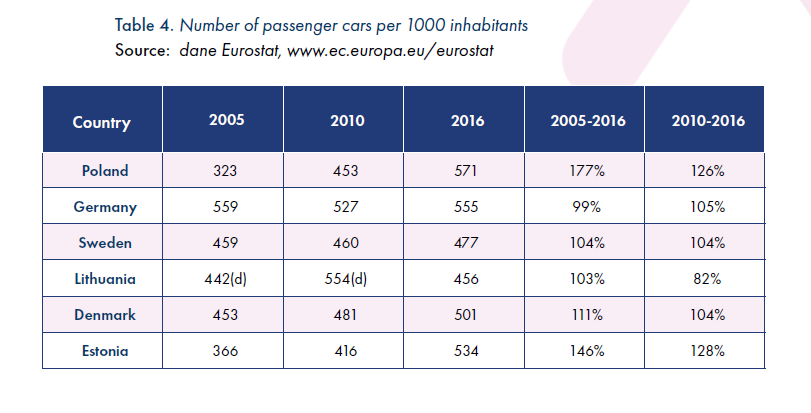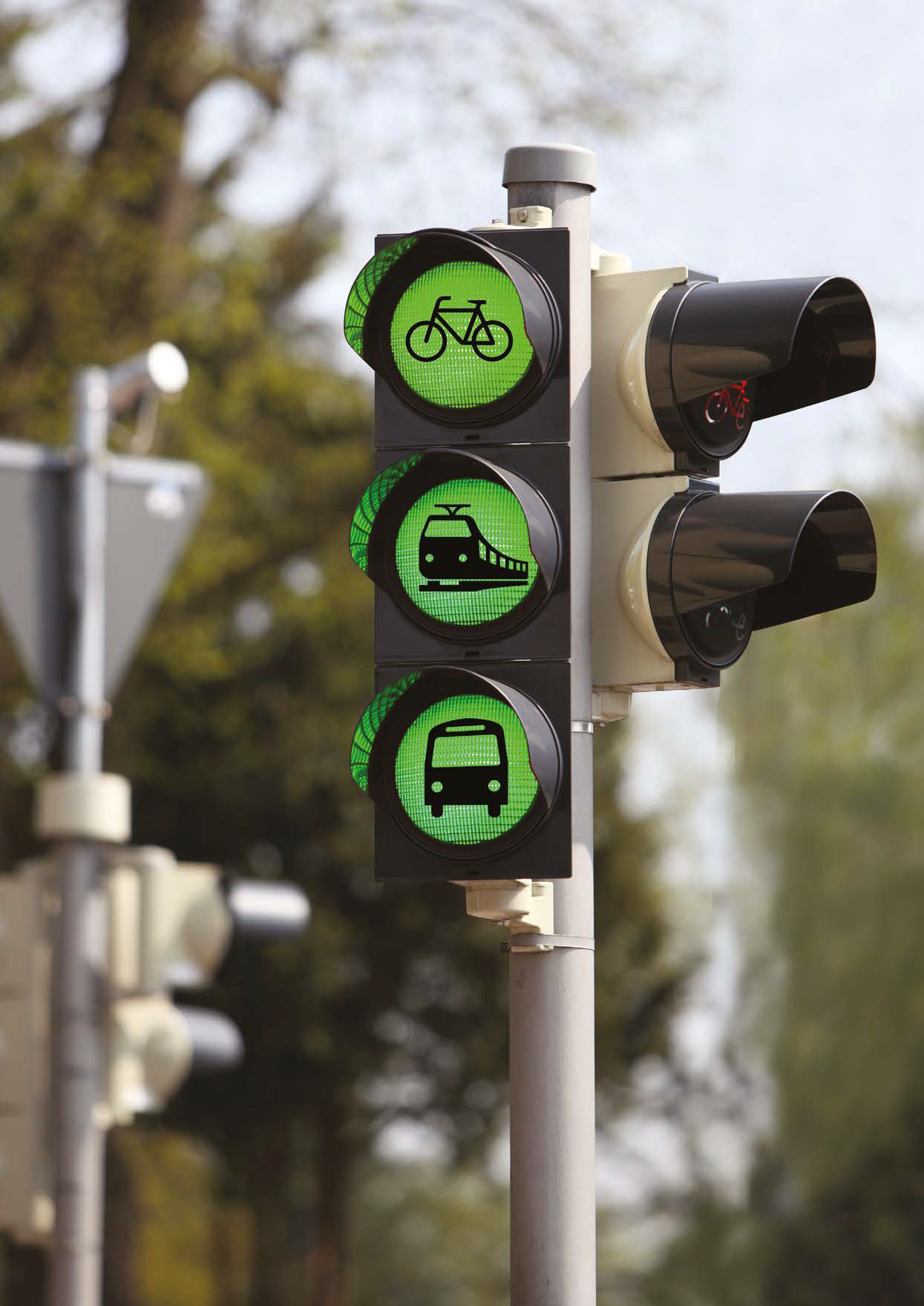
TRENDS AFFECTING PUBLIC TRANSPORT
?????????? ?????? ?? ??????? ????:
The EU passenger car fleet grew by 4.5% from 2012 to 2016 (the number of vehicles on the road went from 241 to 252 million). The growing trend as for the number of private cars can be observed in almost all countries subject to analysis (table 3). Research conducted in Sweden shows that 83% of their households have got at least one private car (in Poland 63%, in Denmark 60%).
???????????? ?? ???? ?????? ????????? ????????
To change the inhabitants’ travel behaviour and encourage as many of them as possible to use public transport instead of private cars subsequent local governments in various countries decide to introduce zero-fare public transport services. We can observe a wide range of various solutions applied. Depending on the conditions fare-free travels apply to: school children, people of certain age (most often seniors), people registered within a particular area, residents of a particular country, and all people without any exceptions (including tourists).
???????? ?? ??? ?????????? ?? ??????????? ????? ???????
One of the goals of the European Union, defined e.g. in the White Paper on Transport, is to establish competitive and resource-efficient public transport system. The EU also agreed to reduce greenhouse gas emissions by 20% (relative to 1990) to 2020 and by 80-95% to 2050. As per the estimates provided for eBus report, in Europe at present there are over 1300 buses in operation powered by electric energy, including 956 battery electric buses (73%), 271 trolleybuses (21%), 87 Plug-in hybrid (6%). The largest electric bus fleet in Europe can be found in the United Kingdom (ca. 18%) and the Netherlands, Switzerland, Poland and Germany (ca. 10% each)¸. In order to limit the impact of public transport vehicles on the environment, works are conducted to power the vehicles by LNG and CNG gas, biogas and hydrogen.

???????? ?? ??? ?????????? ?? ??? ????????????
Public transport has been changing as a result of technological development observed every year. The most vivid changes refer to:
• Distribution of tickets
It is estimated that today in Western Europe ca. 70% (67.3%) of the inhabitants have smartphones. It provides new possibilities for people responsible for public transport development and operation. Thanks to smartphones it is possible to provide passengers with information on any changes in the schedule and location of public transport vehicles in real time. Moreover, with the use of smartphones passengers can receive information on the most convenient line of public transport for their travel with possible changes and waiting time at the stops. Smartphones are also convenient for ticket distribution system and generate relatively low costs of such solution.
• Telematic solutions
Introduction of telematic solutions and ITS (Inteligent Transport Systems) to public transport in various cities helps to improve the quality of rendered services. Such solutions enable e.g. to: manage, diagnose and monitor public transport vehicles and give them priority in urban traffic. They can also be used to predict automatically the travel time of public transport vehicles under current traffic situation and generate proper information on electronic bus stop boards. Telematic systems also aim to facilitate private car traffic affecting at the same time the travel time by public transport along common sections of roads. Moreover, current telematic systems make it possible to penalize people who drive on bus lanes without proper authorization, fail to stop at red traffic lights and exceed speed limit.
• Autonomization of vehicles
After the success of autonomous underground lines works on autonomization of groundbased public transport have begun (both rail and road transport). More and more countries decide to move trial autonomous vehicles from the test routes to the streets of their cities. The first countries in Europe which decided to provide public transport services with the use of autonomous vehicles and introduced them in the city traffic included Sweden, Germany and the Netherlands. At the current development stage of autonomous vehicle technology the operational vehicles carry ca. 10-15 passengers at a speed of ca. 20-40 km/h. Therefore, the vehicles fail to constitute the alternative for city buses, only supplement their offer. The goal of the first vehicles of such type is not only to provide transport services but also make the inhabitants used to road traffic automatization, including collective and individual transport.

